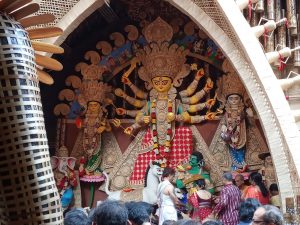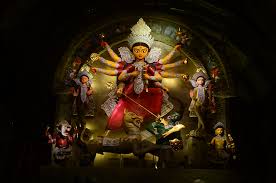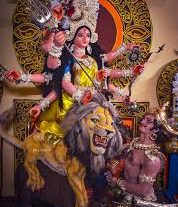Durga Puja isn’t confined to one skyline. This year, cities across India are building a festival playbook that blends tradition with inclusive design, smart tools, and grassroots kindness. Today’s city-by-city  check-in shows how organizers are making Puja safer, more welcoming, and easier to navigate—especially for seniors, children, and people with disabilities. If traveling or relocating for work or study, this guide maps how to experience the spirit of Puja anywhere and still feel at home.
check-in shows how organizers are making Puja safer, more welcoming, and easier to navigate—especially for seniors, children, and people with disabilities. If traveling or relocating for work or study, this guide maps how to experience the spirit of Puja anywhere and still feel at home.
What’s Trending Nationally
-
Inclusion first: committees are investing in tactile floor strips, ramps with non-slip surfaces, Braille labels on donor boards, and seated darshan zones. Many have sign-language interpreters on peak days.
-
Digital darshan: high-quality livestreams from select pandals mean families can pray together from different cities. QR-based queue tokens and location-linked updates are reducing wait fatigue.
-
Safety and hygiene: water stations at 250–500m intervals, on-call medical volunteers, and lost-and-found child care desks are becoming standard at leading venues.
City Highlights Today
-
Delhi-NCR: theme pandals are leaning into folk arts from across India—Madhubani, Kalamkari, and Pattachitra elements are woven into arches and backdrops. Metro-connectivity maps are displayed at entry points to encourage public transit.
-
Mumbai: coastal weather planning includes wind-rated installations, secure guy-wires, and anti-slip mats near idol platforms. Food courts emphasize community kitchens and regional bhogs with allergen disclosures.
-
Bengaluru: sustainability pilots feature solar lighting, reclaimed wood frames, and neighborhood composters for bhog leftovers. Expect cleaner, quieter nights with decibel-checked sound rigs.
-
Pune and Hyderabad: youth volunteer corps are running “access escorts” to guide seniors from drop-off zones to seating, minimizing strain and confusion.
-
Guwahati and Siliguri: idol art leans into river ecologies and local weave traditions—Eri silk, cane, and bamboo combine into stunning light-friendly textures.
Today’s Devotion & Culture Notes
-
Morning rituals are focusing on continuity prayers for community health; many priests are
 encouraging mindful silence during aarti to balance the evening’s celebrations.
encouraging mindful silence during aarti to balance the evening’s celebrations. -
Cultural stages are testing sound and light cues—with classical dance in the afternoon and folk/theatre slots at night—so audiences of all ages can find something meaningful.
Travel Planning for Puja-Hopping
-
Take metro or shared cabs into festival zones; park at hubs instead of residential lanes.
-
Keep a charged battery pack; livestreams and queue apps can drain phones faster than usual.
-
For kids and seniors, schedule the quietest darshan between 7–9 AM; reserve evenings for two main pandals to avoid burnout.
Photography & Content Tips
-
Capture the human side: volunteer smiles, water-distribution heroes, and the moment someone offers a seat to a stranger.
-
Time-lapse the transformation of a lane from dusk to peak crowd; it tells the city’s story in seconds.
-
Showcase accessibility wins: ramps, handrails, seating—amplifying good design encourages more of it.
Responsible Celebration
-
Step aside for emergency services and respect barricade openings—they’re not shortcuts.
-
Use dry flower offerings and biodegradable plates; skip glitter confetti that sheds microplastics.
-
Encourage friends and family to try digital darshan when queues are heavy—it reduces strain and maintains reverence.




